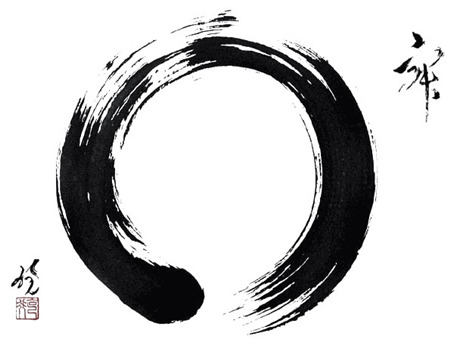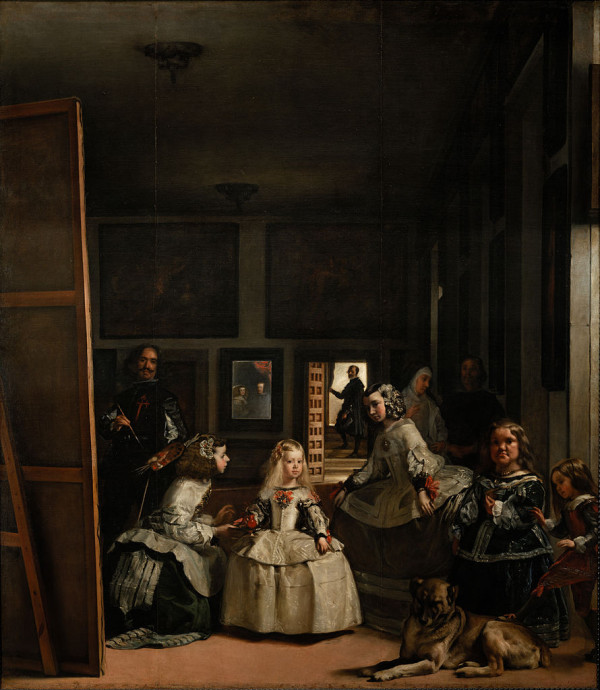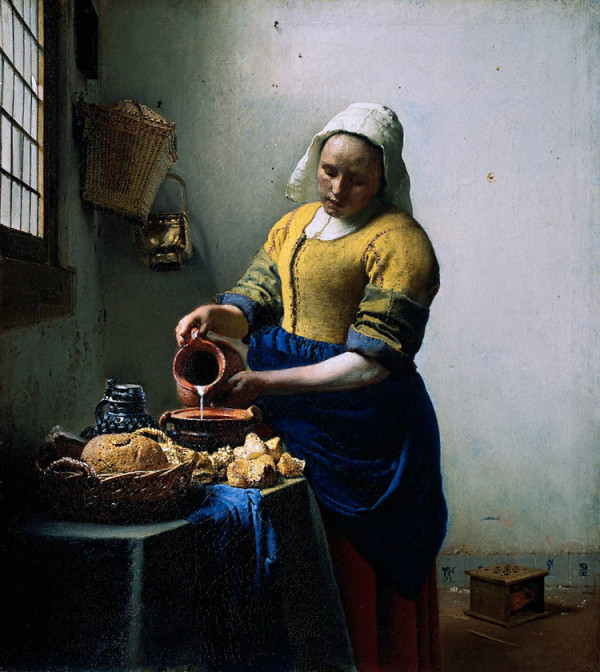
The other day I blogged about the story of Giotto’s O: A messenger from the Pope arrived in Giotto’s studio in Florence one morning. He asked for a drawing to prove the artist’s skill to the Pope, who was seeking a painter for some frescoes in St. Peter’s. As Vasari tells the story, Giotto “immediately took a sheet of paper, and with a pen dipped in red, fixing his arm firmly against his side to make a compass of it, with a turn of his hand he made a circle so perfect that it was a marvel to see it.” Of course, Giotto got the job.
I had never heard the story until I ran across it online recently. It stuck in my mind, a romantic parable of what artistic mastery means. To paint an angel, first you must learn to paint a perfect circle — something like that.
Curious, I wandered around the web looking for more information about Giotto and his circle, and, in the hopscotch way of the web, I found an interesting blog post that linked Giotto’s O to a different sort of circle, the ensō, the asymmetric circle of Japanese Zen calligraphy.
In Zen Buddhist painting, ensō symbolizes a moment when the mind is free to simply let the body/spirit create. The brushed ink of the circle is usually done on silk or rice paper in one movement (but the great Bankei used two strokes sometimes) and there is no possibility of modification: it shows the expressive movement of the spirit at that time. [Wikipedia]
The imperfection of the circle — the asymmetry, the visible brush trails, the blobs of ink — is the point. In its very “flaws,” ensō embodies a traditional Japanese aesthetic, fukinsei (不均整), asymmetry or irregularity. Garr Reynolds (one of my favorite bloggers) explains,
The idea of controlling balance in a composition via irregularity and asymmetry is a central tenet of the Zen aesthetic. The enso … is often drawn as an incomplete circle, symbolizing the imperfection that is part of existence.
So these two famous circles, Giotto’s O and the ensō, embody very different aesthetic ideals.
Giotto’s circle is precise mechanical perfection, “a circle so perfect that it was a marvel to see.” Even his technique is machinelike: he pins his elbow to his side, turning his arm into a virtual compass.
Vasari adds another detail, as well. In the versions of the story that I initially read, Giotto loads his brush with red paint and paints the circle with a single sweep of his arm. But in Vasari’s telling, Giotto scratches out his circle with a pen (a quill, presumably) rather than a brush. He wants to eliminate even the wavering edge of a brush stroke, the little quivers of the bent bristles.
In writing, that sort of perfectionism is fatal. The very idea of creating “perfect” sentences or stories is paralyzing. No one can write perfectly. I have learned this lesson the hard way. I am a perfectionist by nature. It is no wonder the Giotto story appealed to me. But there are no Giottos in writing. You have to embrace imperfection, you have to accept the little oddities and surprises that emerge in the moment of creation, in the immersive “flow” state that characterizes the best writing sessions. I don’t know the first thing about Zen, but to me the go-with-it philosophy of the ensō feels much truer to the actual experience of writing well. It is not a feeling of abandon; like ensō painting, good writing is never careless or out of control. At the same time, every writer has to accept the little wobbles of his brush, the little traces of his bristles, the funny pear-shape of his ensō. Not because these flaws are unavoidable (though they are) but because they are beautiful.
To a writer like me — who tends to self-edit too much, who sometimes imagines he can write perfectly — the story of Giotto’s O teaches the wrong lesson. I will think of the ensō instead.


